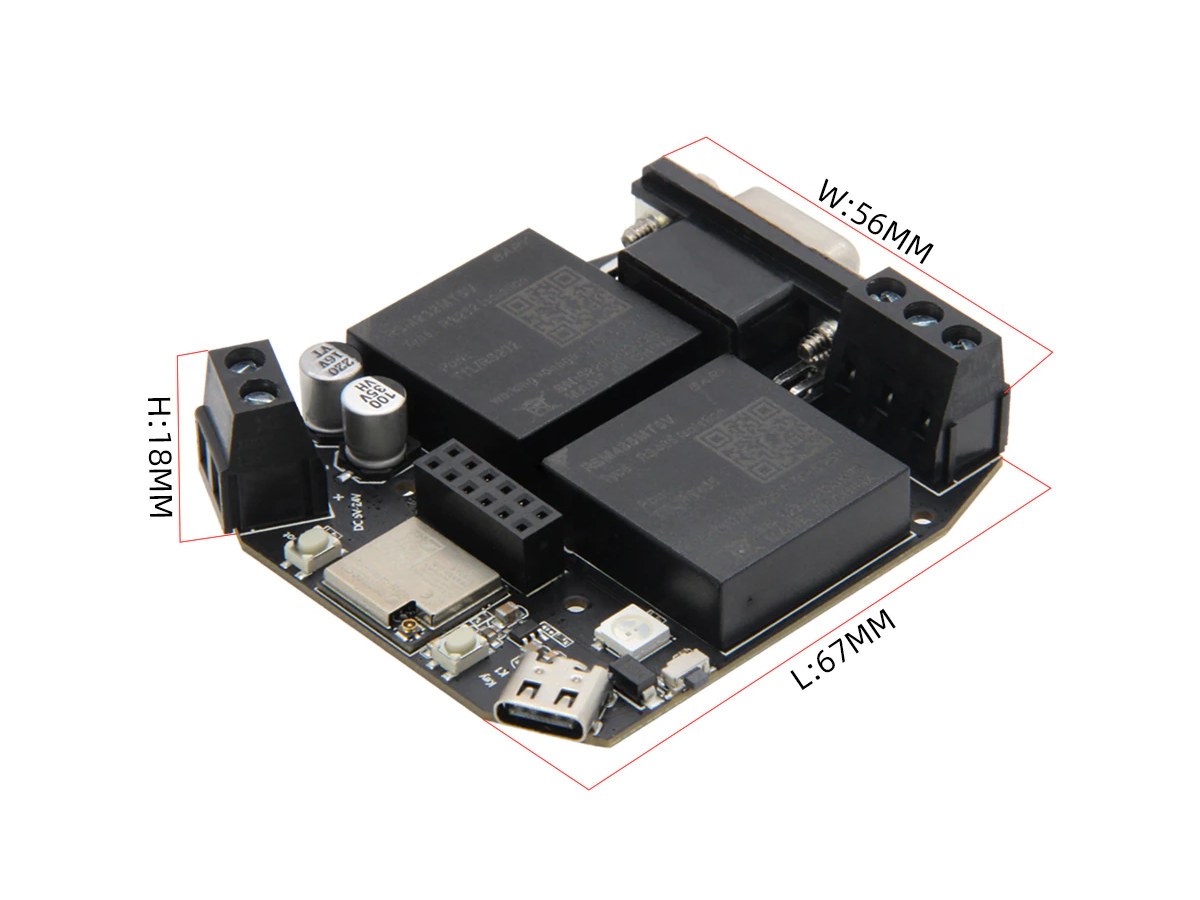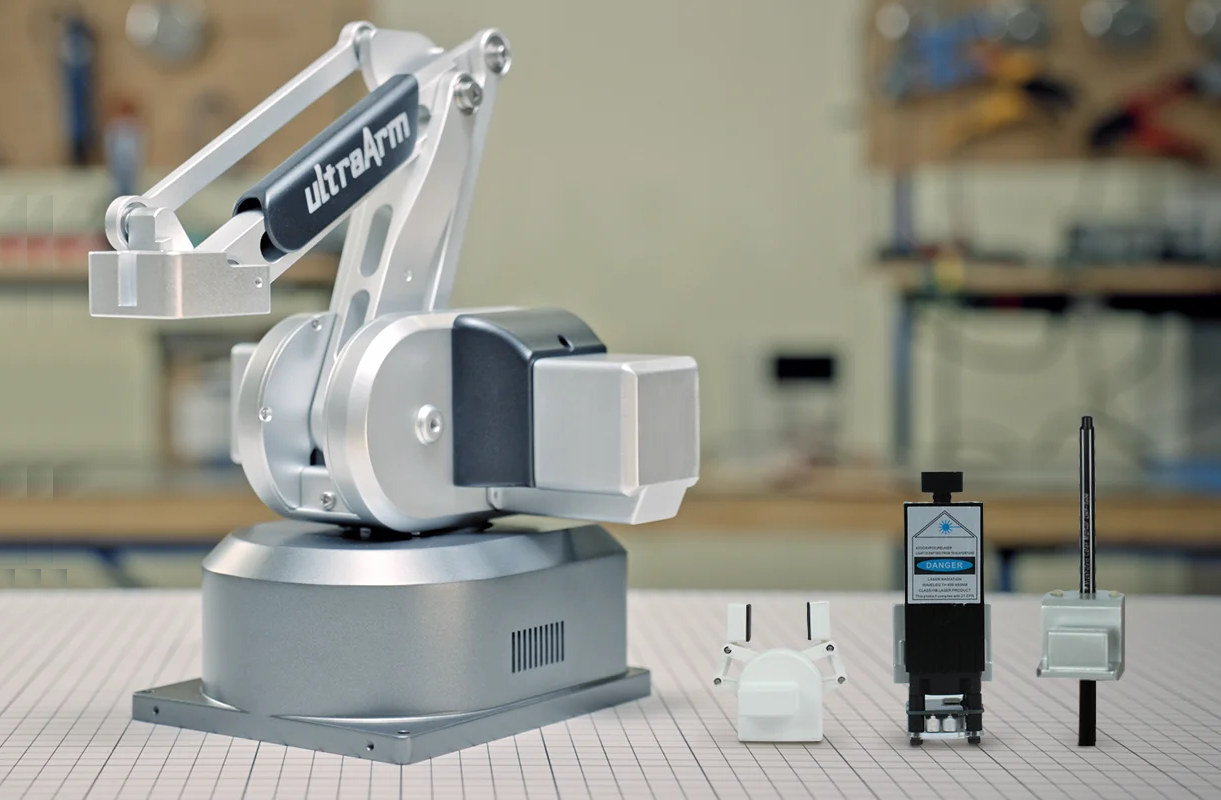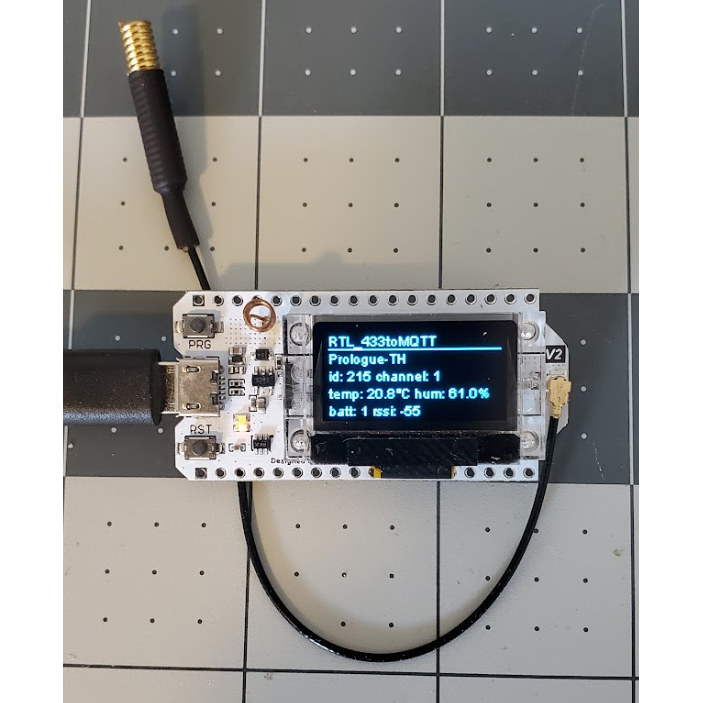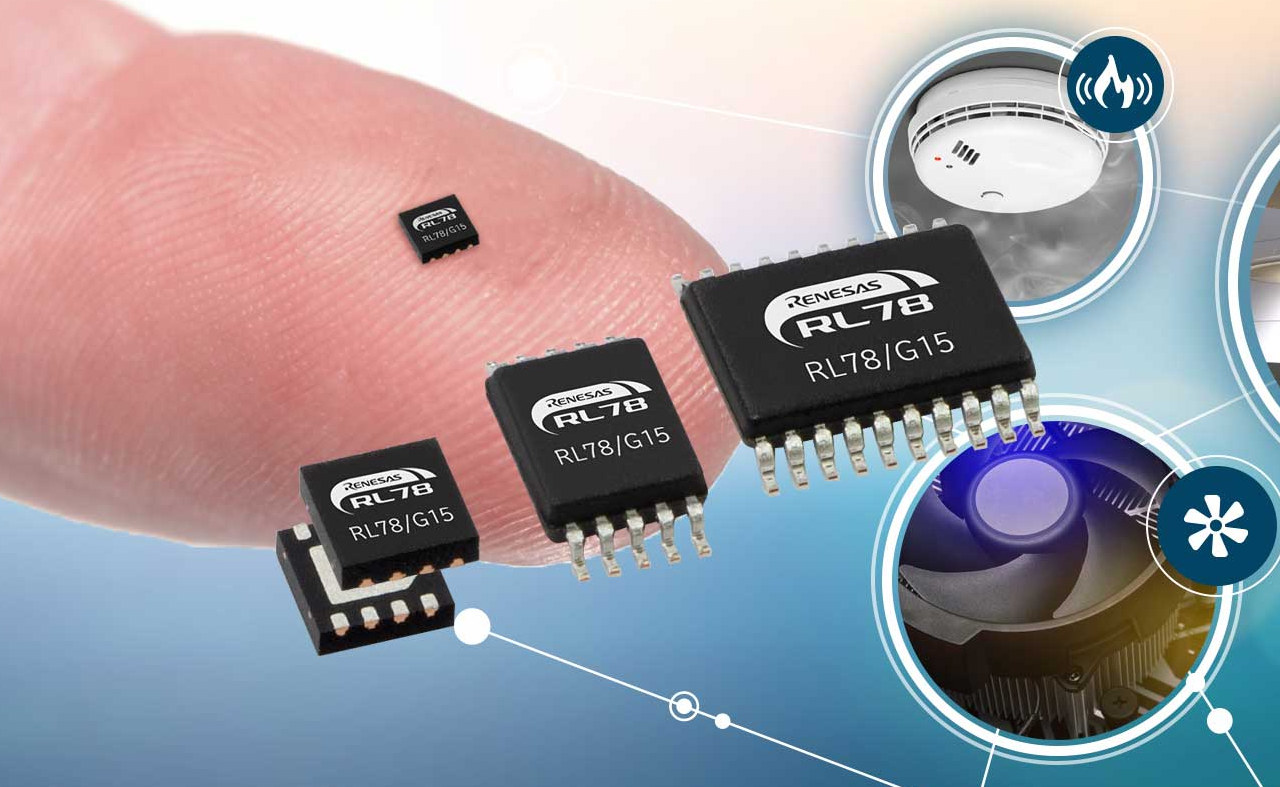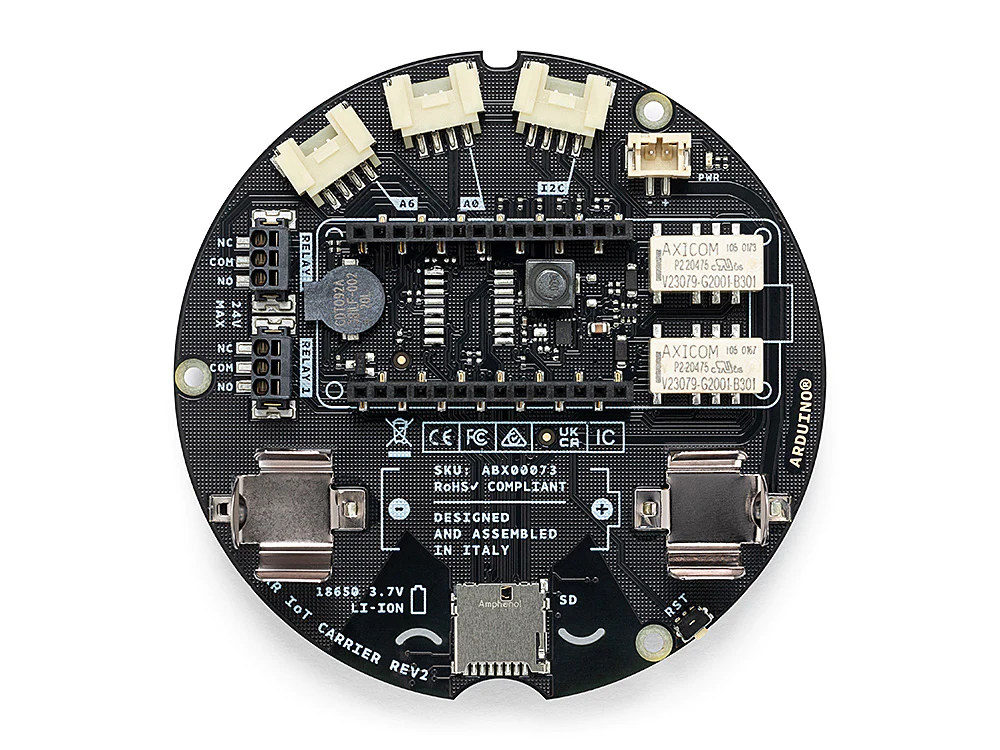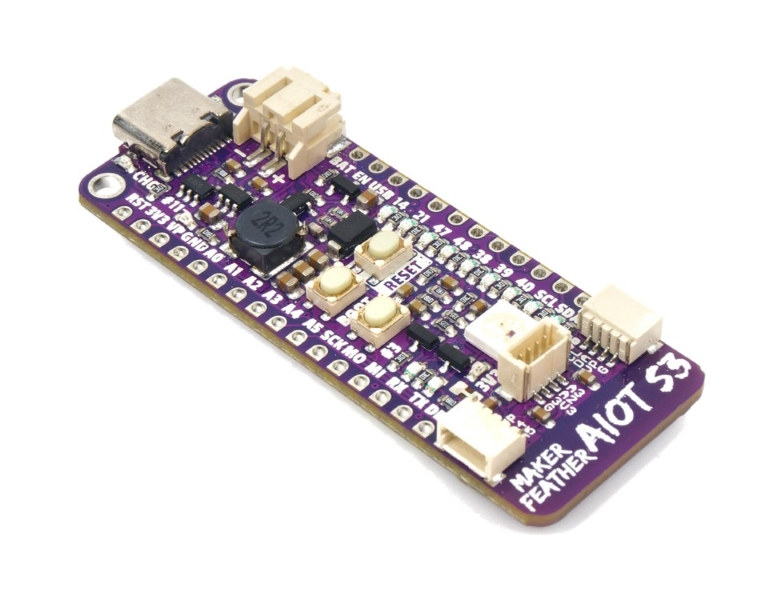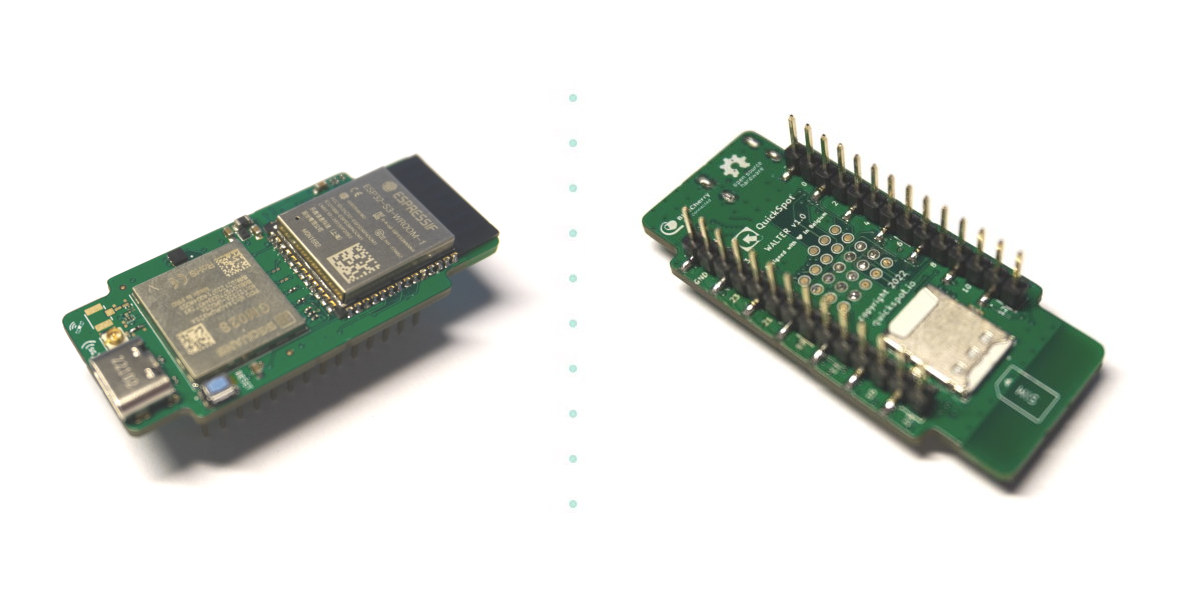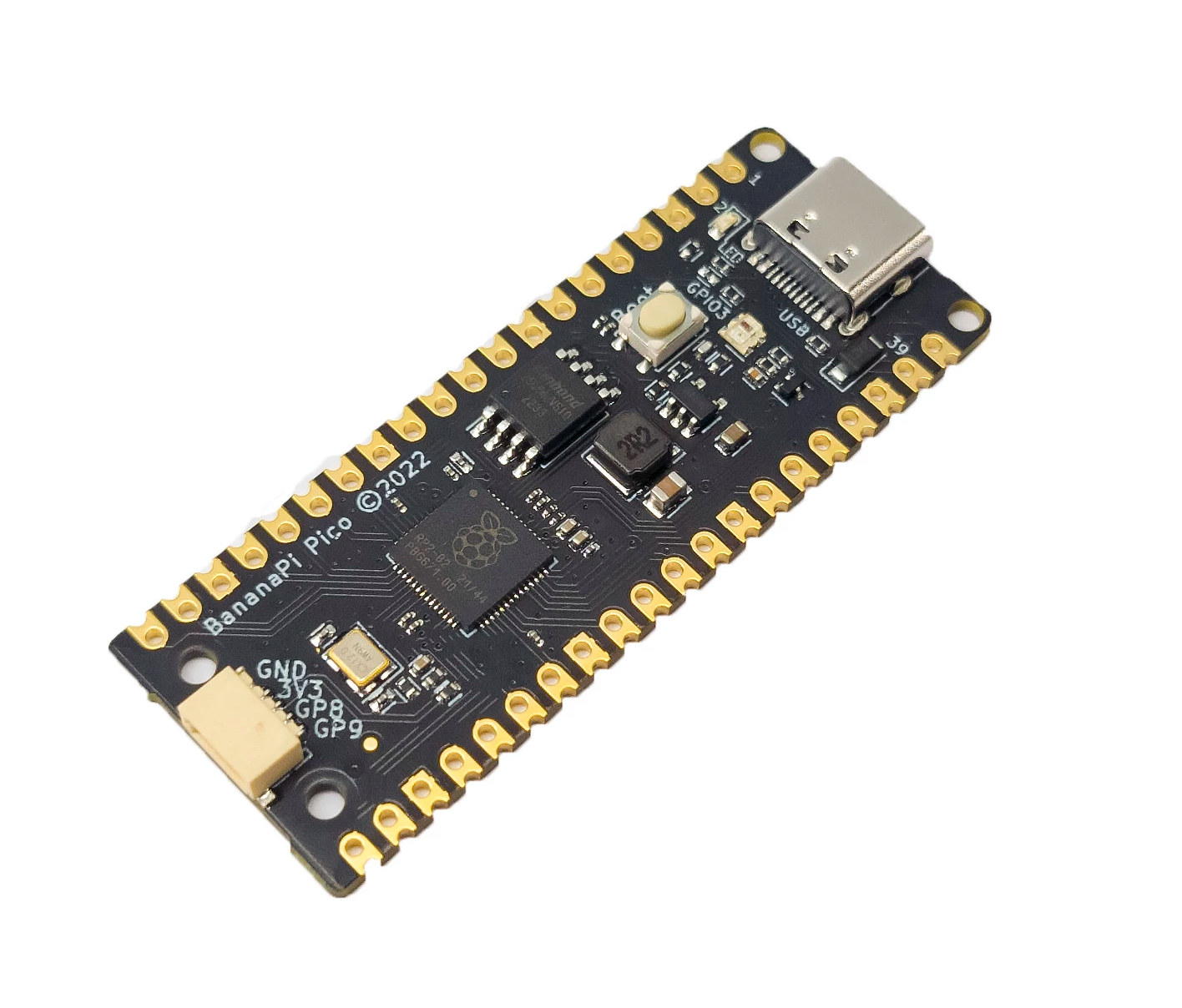LILYGO T-RSC3 is a relatively compact ESP32-C3 board with WiFi 4 and Bluetooth LE 5.0 connectivity, support for RS232 and RS485 communication protocols through a DB9 connector and a terminal connector respectively, and a wide 5V to 24V DC power input. LILYGO had already made an ESP32 board with CAN Bus and RS485 interfaces called the T-CAN485, but without any isolation. The new T-RSC3 offers both RS232 and RS485 interfaces, but no CAN Bus, protected by isolated transceiver modules that should make it safer to use in industrial environments. LILYGO T-RSC3 board specifications: Wireless module – Espressif Systems ESP32-C3-MINI-1U module with ESP32-C3 RISC-V microcontroller @ 160 MHz with 400 KB SRAM, 2.4 GHz WiFi 4, Bluetooth 5.0 LE & Mesh, 4MB flash, and a u.FL antenna connector Industrial control interfaces RS232 via DB9 connector, RSM232MT5V isolated transceiver with 3000V isolation, 4.75~5.25V input, 5V/50mA output, baud rate from 1200 to 256,000 […]
ultraArm P340 Arduino-based robotic arm draws, engraves, and grabs
Elephant Robotics ultraArm P340 is a robot arm with an Arduino-compatible ATMega2560 control board with a 340mm working radius whose arm can be attached with different accessories for drawing, laser engraving, and grabbing objects. We’ve previously written and reviewed the myCobot 280 Pi robotic arm with a built-in Raspberry Pi 4 SBC, but the lower-cost ultraArm P340 works a little differently since it only contains the electronics for controlling the servos and attachments, and needs to be connected to a host computer running Windows or a Raspberry Pi over USB. ultraArm P340 specifications: Control board based on Microchip ATMega2560 8-bit AVR microcontroller @ 16MHz with 256KB flash, 4Kb EEPROM, 8KB SRAM DOF – 3 to 4 axis depending on accessories Working radius – 340mm Positioning Accuracy – ±0.1 mm Payload – Up to 650 grams High-performance stepper motor Maximum speed – 100mm/s Communication interfaces – RS485 and USB serial Attachment […]
433 MHz is not dead! Using an ESP32 board with LoRa module to talk to 433 MHz sensors
CNXSoft: This is a guest post by Florian Robert (1technophile) of the OpenMQTTGateway project about using a 433 MHz LoRa transceiver on an ESP32 board for home automation, specifically to talk to 433 MHz sensors Everyone is talking about Matter, Bluetooth, Zigbee, and Zwave, but before these complex communication technologies, we had one simple, robust one that our sensors and devices used to leverage: 433MHz. It may be too simplistic to talk about 433 MHz as a technology as there are different and various usages of this frequency. You can find it being used in numerous devices around your home, from your outdoor temperature sensors, and security sensors to the tire pressure sensors in your car. If we want to be specific, we can talk about the different radio frequencies (433 MHz, 915MHz, 868MHz, 315MHz, or 350MHz) and signal modulations OOK, ASK, FSK that we encounter behind the keyword 433MHz. […]
Renesas RL78/G15 8-bit MCU is offered in a 3x3mm package
Renesas Electronics RL78/G15 is an entry-level 8-bit microcontroller with 1 KB of SRAM, 4 or 8KB of code flash memory, and offered in package sizes ranging from 8 to 20 pins, down to an 8-pin device measuring just 3×3 mm. STMicro has just unveiled the STM32C0 32-bit microcontroller claiming “your next 8-bit MCU is a 32-bit” with packages from 8- to 48-pins and packages as small as 1.70 x 1.42 mm and 3x3mm, and a price similar to other 8-bit industrial microcontrollers. To that, I say “not so fast STMicro!”, as Renesas has just launched the 16 MHz RL78/G15 8-bit microcontroller family with many of the same features and target use cases as the STMC32C011 sub-family. Renesas RL78/G15 key features and specifications: CPU core – Renesas RL78 8-bit core @ up to 16 MHz Memory – 1NS SRAM, Storage – 4 to 8KB program flash, 1KB data flash Peripheral I/F […]
Arduino MKR IoT Carrier Rev2 gets a Bosch BME688 4-in-1 environmental sensor
Arduino has launched the MKR IoT Carrier Rev2 board for Arduino MKR boards with a Bosch SensorTech BME688 4-in-1 pressure, humidity, temperature, and gas sensor replacing the HTS221 humidity sensor and LP22HB barometric pressure sensor, and the LSM6DSOX taking the place of the LSM6DS3, among other some other small changes. First sold as part of the Arduino Oplà IoT Kit, the Arduino MKR IoT Carrier eventually became available on its own in February 2021 offering a display, sensors, and I/Os for Arduino MKR boards with wireless connectivity. The company has now introduced a second revision for the Arduino MKR IoT Carrier with new sensors and repositioning of some of the components following customer feedback. Arduino MKR IoT Carrier Rev2 features & specifications: Compatible with Arduino MKR family boards with WiFi, LoRa, NB-IoT, or 3G cellular connectivity Storage – MicroSD card holder Display – Round 1.3-inch OLED display with 240×240 resolution […]
Maker Feather AIoT S3 – An ESP32-S3 board programmable with CircuitPython or Arduino
Cytron Maker Feather AIoT S3 is an ESP32-S3 board compatible with the Adafruit Feather form factor and suitable for makers and STEM education with features like LEDs for GPIOs, a buzzer, expansion headers and connectors, and support for CircuitPython & Arduino. The WiFi and Bluetooth LE IoT board also supports LiPo and Li-Ion batteries, includes a USB Type-C port for power/charging and programming, and a few buttons. It’s suitable for machine learning thanks to the vector extensions found in the ESP32-S3 microcontroller. Maker Feather AIoT S3 specifications: Wireless module – Espressif ESP32-S3-WROOM-1-N8R8 module with ESP32-S3 dual-core LX7 microprocessor @ up to 240 MHz with Vector extension for machine learning, 8MB FLASH, 8MB PSRAM, WiFi 4 and Bluetooth 5 LE/Mesh USB – 1x USB Type-C port power and programming Expansion 2x GPIO headers compatible with Adafruit Feather form factor and FeatherWing add-on boards 3x Maker Ports compatible with Qwiic, STEMMA QT, […]
Walter ESP32-S3 board supports NB-IoT, LTE-M, and GPS
QuickSpot Walter is an ESP32-S3 development board with built-in WiFi 4 and Bluetooth LE/Mesh connectivity, as well as NB-IoT, LTE-M, and GNSS support through a Sequans GM02SP 5G IoT modem that appears to be a variant of the Sequans Monarch 2 GM02S with GNSS support. Walter specifications: Wireless modules ESP32-S3-WROOM-1-N16R2 module ESP32-S3 dual-core LX7 microcontroller 2MB QSPI PSRAM 16MB QSPI flash 802.11 b/g/n WiFi 4 up to 150 Mbps with on-board antenna Bluetooth 5 LE up to 2Mbps, Bluetooth Mesh Sequans GM02SP modem LTE Cat M1 (LTE-M) and NB1/NB2 (NB-IoT) GNSS and assisted GNSS using GPS and Galileo constellations NanoSIM for cellular connectivity I/Os 2x 14-pin headers with up to 24x GPIO, UART, VIN, 3.3V, and GND 23x test points 3.3V I/O voltage Power Supply 5V (3.0 to 5.5V) DC via VIN pin 5V via USB Type-C port Dimensions – 55 x 24.8 mm Temperature Range – -40°C to +85°C […]
Banana Pi BPI-Pico-RP2040 – Raspberry Pi Pico replica gets USB-C port, I2C connector, and RGB LED
Banana Pi BPI-Pico-RP2040 is basically a clone of the original Raspberry Pi Pico, but with the addition of an RGB LED and a 4-pin I2C connector, and the company replaced the micro USB port with a Type-C connector. The rest of the board, also called Banana Pi Pico, is exactly the same up to the through holes and castellated holes for the I/Os, and has a similar form factor as the Banana Pi BPI-PicoW-S3 that adds WiFi and Bluetooth through the ESP32-S3 wireless microcontroller. Banana Pi BPI-Pico-RP2040 specifications: MCU – Raspberry Pi RP2040 dual-core Cortex-M0+ microcontroller @ up to 133 MHz with 264KB SRAM Storage – 2MB QSPI flash USB – 1x USB 1.1 Type-C port used for power and programming Expansion 2x 20-pin 2.54mm pitch header and castellated holes with 26 GPIOs, 3x 12-bit ADC up to 500 Kbps, 2x UART, 2x I2C, 2x SPI, 16x PWM, 2x programmable […]


